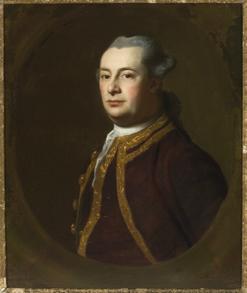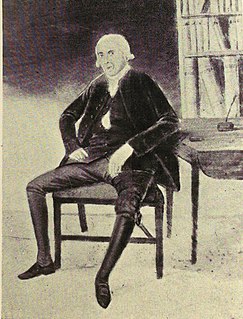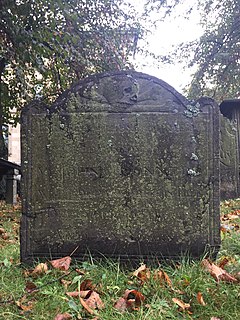
Annie Emma Thompson, Lady Thompson was the wife of Sir John Thompson, the fourth Prime Minister of Canada.

Michael Francklin or Franklin served as Nova Scotia's Lieutenant Governor from 1766 to 1772. He is buried in the crypt of St. Paul's Church (Halifax).

The Spring Garden Road area, along with Barrington Street is a major commercial and cultural district in Halifax, Nova Scotia, Canada. It acquired its name from the fresh water spring that flows directly beneath it. It comprises Spring Garden Road, South Park Street, and a number of smaller side streets. The area is considered to be one of the trendiest areas in Halifax and is one of the busiest shopping districts east of Montreal.

St. Mary's Cathedral Basilica is a Gothic Revival Catholic cathedral located in downtown Halifax, Nova Scotia, Canada. It is the cathedral church of the Archdiocese of Halifax and is the largest Catholic church in the Archdiocese. Consecrated on October 19, 1899, it was made a basilica in 1950 by Pope Pius XII. The St. Mary's Cathedral Basilica boasts the tallest granite spire in North America.

Cornelius O'Brien was a Canadian Roman Catholic priest, archbishop, and author of 39 books.

The Old Burying Ground is a historic cemetery in Halifax, Nova Scotia, Canada. It is located at the intersection of Barrington Street and Spring Garden Road in Downtown Halifax.

Abbé Pierre Antoine Simon Maillard was a French-born Roman Catholic priest. He is noted for his contributions to the creation of a writing system for the Mi'kmaq indigenous people of Île Royale, Cape Breton Island, Canada. He is also credited with helping negotiate a peace treaty between the British and Mi'kmaq people, which resulted in the Burying the Hatchet Ceremony. He was the first Catholic priest in Halifax and is buried in the St. Peter's Cemetery in downtown Halifax.
Garrison Cemetery is a cemetery located on the grounds of Fort Anne in Annapolis Royal, Nova Scotia. It is located next to the old Court House, at the intersection of George St. and Nova Scotia Trunk 1.

Richard Bulkeley was an influential administrator in Nova Scotia from 1749 to 1800. Historian Phyllis Blakeley writes that Bulkeley, "assisted 13 governors and lieutenant governors from Cornwallis to Wentworth. In half a century of service he took part in the founding of Halifax, the immigration of New Englanders and loyalists, and the prosperity of the French revolutionary wars." During his lifetime, known for hosting dignitaries and grand parties, he was known as "the Father of the Province." When he died, he was the last surviving settler who arrived with Cornwallis.

Holy Cross Cemetery is a cemetery in Halifax, Nova Scotia, owned and operated by the Roman Catholic Archdiocese of Halifax-Yarmouth. It was constructed in 1843 under the direction of Archbishop William Walsh, on land provided by local authorities. Holy Cross Cemetery replaced the first Catholic cemetery in Halifax, the St. Peter's Cemetery located next to St. Mary's Basilica on Spring Garden Road. Since 1843, some 25,000 persons have been buried at Holy Cross, many of Irish descent, including Canada's fourth Prime Minister, Sir John Sparrow Thompson.

Pisiguit is the pre-expulsion-period Acadian region located along the banks of the Pisiquit River from its confluence with the Minas Basin of Acadia, which is now Nova Scotia, including the St. Croix River drainage area. Settlement in the region commenced simultaneous to the establishment of Grand-Pré. Many villages spread rapidly eastward along the river banks. These settlements became known as Pisiguit or. The name is from the Mi'kmaq Pesaquid, meaning "Junction of Waters". In 1714, there were 351 people there.

The Naval Museum of Halifax is a Canadian Forces museum located at CFB Halifax in the former official residence of the Commander-in-Chief of the North America Station (1819–1905). Also known as the "Admiralty House", the residence is a National Historic Site of Canada located in Halifax, Nova Scotia, Canada. The museum collects, preserves and displays the artifacts and history of the Royal Canadian Navy.

Diederik Jacob van Tuyll van Serooskerken was a Dutch nobleman who served as a major general in the Imperial Russian Army, and later as the fourth Russian ambassador to the United States.

Little Dutch (Deutsch) Church is the second oldest building in Halifax, Nova Scotia after St. Paul's and was built for the Foreign Protestants.

St. Patrick's Church is a Roman Catholic parish church in Halifax, Nova Scotia. The parish was founded in 1843 and the present church was opened in 1885. It is registered as a Provincial Heritage Building and is currently served by the Society of Jesus.

John Connor (1728–1757) was a mariner who ran the first ferry in Halifax Harbour, Nova Scotia, and was involved in the Attack at Mocodome during Father Le Loutre’s War, which effectively ended the Treaty of 1752.

The Royal Navy Burying Ground is part of the Naval Museum of Halifax and was the Naval Hospital cemetery for the North America and West Indies Station at Halifax, Nova Scotia. It is the oldest military burial ground in Canada. The cemetery has grave markers to those who died while serving at Halifax and were treated at the Naval medical facility or died at sea. Often shipmates and officers had the grave markers erected to mark the deaths of the crew members who died while in the port of Halifax.
The Hillcrest Cemetery is the oldest protestant cemetery in Lunenburg, Nova Scotia and one of the oldest in Canada. The cemetery is adjacent to the Lunenburg Academy. The oldest marker is dated 1761, eight years after Lunenburg was established. Hillcrest Cemetery contains 5 Commonwealth war graves from World War I and one from World War II.
The Old Parish Burying Ground is the oldest protestant cemetery in Windsor, Nova Scotia and one of the oldest in Canada. The graveyard was located adjacent to the first protestant church in Windsor (1788). The oldest marker is dated 1771, twelve years after the New England Planters began to settle the area.















